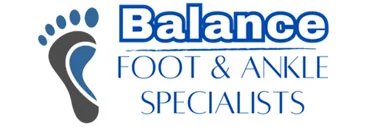Best Shoes & Best Insoles
Pes Cavus Foot Deformity Treatment [High Arch Feet]
What is pes cavus? We review how to treat pes cavus, the best shoes for a pes cavus foot deformity, and the best insoles!
How to treat a pes cavus foot deformity video:
What is pes cavus & pes cavus treatment video summary:
🦶Do you have painful high arches or high arch feet? We go over the BEST Pes Cavus Foot Deformity Treatments!🦶
A pes cavus deformity or pes cavus foot type can be related to over supination of the foot. This can be related to high arches & a high arched foot type. We go over the best running shoes for high arches & best orthotics for high arches.
0:00 High Arch Feet & Best Shoes for High Arches
1:03 How to tell if you have high arches?
1:26 Supination vs. Pronation & High Arch Feet vs. Flat Feet
2:25 Pes Cavus Foot vs. Flat Foot Pain
3:33 pronation & supination of the foot
3:40 Pes cavus deformity podiatrist treatment
3:55 Nerve conditions & Pes cavus foot deformity
4:05 Charcot Marie Tooth Disease
4:35 Pes cavus foot deformity
5:01 Pes Cavus foot deformity
6:22 Pes cavus deformity causes
7:13 Pes cavus surgery & high arch foot deformity
8:00 High arch foot deformity
8:35 High arch foot pain relief
9:11 High arch foot massage & stretches
10:11 Best High arch foot slippers
10:30 Best high arch sandals
11:00 Best walking shoes for high arches
11:30 Best running shoes for high arches
13:16 Best orthotics for high arches
13:25 Best insoles for high arches
14:42 Best custom high arch insoles
14:58 High arch foot type and nerve disease
15:54 Cross-training
16:53 Best high arch foot exercises & Pes cavus exercises.

What is a pes cavus deformity of the foot?
In Latin, Pes cavus means “hollow foot.”
It basically means the same thing as having high arches, having high arched feet, and supinated foot type.
Pes cavus is a multiplanar foot deformity characterized by an abnormally high medial longitudinal arch.
A Pes cavus foot deformity commonly features a turned in hindfoot or calcaneus, a plantarflexed position of the first metatarsal (big toe joint pressed into the ground), adducted forefoot (forefoot turned inward, and dorsal contracture of the toes (hammertoes or claw toes).
Despite numerous reported studies, very few high-level studies exist toward treating a high arch foot type.
Pain in the arch of the foot:
You spend a huge portion of your life on your feet, so working with any problems there can be challenging.
- Foot problems are much more common than you’d think.
- A study performed in November of 2010 found that foot disorders affected 20-60% of all adults. This means almost 60 million people in America were affected by foot disorders in the USA.
- One of the most common foot issues that people are faced with is high arch feet.
- While they may not seem like a huge problem, especially because people with high arch feet live their entire lives, they can cause many problems over time.
High arch feet symptoms:
- High arches & high arch feet can cause the following problems:
- Plantar fasciitis.
- Heel Pain.
- Bottom of the heel spurs.
- Back of the heel spurs.
- Metatarsalgia.
- Ball of the foot pain.
- Morton’s neuroma pain.
High Arch Feet Problems:
High arched feet, also known as a pes cavus deformity, a pes cavus foot, or cavus feet, are a disorder characterized by an abnormally high arch in the foot.
- High arches cause excess amounts of weight to be placed on the ball of the foot and heel of the foot.
- A pes cavus foot deformity can develop at any age, though it’s most commonly inherited at birth.
- This article & source reports that almost 70% of women and 20% of high arch feet are inherited. 99% of women under 60 inherit cavus feet from their parents, as do 63% of men.
What causes pes cavus:
Outside of genetics, cavus foot can be caused by various neurological disorders and other medical conditions.
- Cerebral palsy (acquired at birth),
- Charcot-Marie-Tooth disease (a genetic nerve disease),
- Spina bifida (a condition acquired at birth),
- Polio (acquired during life),
- Muscular dystrophy (a genetic condition),
- Vascular or hemorrhagic strokes (acquired during life),
- And many more conditions.
- It is said that up to 85% of cavus feet can be related to neurological issues.
Cases of cavus foot caused by a neurological disorder are likely to worsen over time. For this reason, it is essential to see a podiatrist and have your foot type diagnosed and taken care of.
Signs of pes cavus high arches:
Cavus foot will cause pain when walking, especially over long periods.
Severe pes cavus foot deformity cases will cause discomfort and pain while standing, often centered in the heel.
Cavus foot can lead to calluses & corns on the ball, heel, and toes, as while as deformity of the toes.
Hammertoes (toes that appear bent) and claw toes (toes clenched like a fist) are common symptoms of cavus foot.
Chronic ankle sprains and recurrent ankle sprains are also sometimes caused by the cavus foot. This pes cavus foot deformity can also lead to imbalance and instability because of forwarding tilt.
In some cases, a neurologic condition associated with pes cavus foot deformity can be associated with foot drop or weakness in the muscles. This means that your neurologically associated pes cavus foot deformity can drag the foot while walking.
Foot drop is almost always a sign of a neurological condition, specifically the common or deep peroneal nerve. When this is present, there is a high suspicion for Charcot Marie Tooth, a genetic condition.
How to tell if you have high arches:
The clearest sign of the cavus foot is a remarkably high arch. If the arch in your foot is visible while it’s planted on the ground, you may have a cavus foot.
A podiatrist can discuss your family history if there is a concern of a genetic or neurologic condition.
Afterward, your podiatrist can perform a gait analysis or biomechanical exam. This will test your foot for strength, signs of weakness, toe deformity, and other symptoms.
Your podiatrist can take a look at your bunions, hammertoes, metatarsalgia, heel pain, plantar fasciitis, ankle pain, supination vs. pronation, and more.
High Arch Feet Treatment:
A pes cavus foot deformity is most often treated with shoes for high arches & insoles for high arches. We are also big fans of high arch sandals, high arch sneakers & high arch slippers for foot pain.
Best insoles for high arches:
Orthotic insoles for high arches may be placed in your shoes, which will help to spread the weight over the whole foot.
- This 2014 review of cavus feet shows that custom cavus foot orthotics and insoles can be very beneficial.
- These are our favorite high arch insoles. Click this link to follow.
Best shoes for a pes cavus deformity:
- Shoes for high arches & pes cavus feet may also be modified or it can be a good idea to simply buy a good pair designed for high arch feet.
- Specific pes cavus shoes will provide ankle support and increase the surface area around the heel to help absorb the weight.
- Especially when combined with a good high arch foot insole.
Best pes cavus deformity support braces:
Your podiatrist may recommend an arch support brace.
This is most often used in foot drop and for recurrent or chronic ankle sprains. These arch support braces may also be recommended for an unstable ankle.
Arch support ankle braces can help to add support and stability to the ankle, making walking easier and much safer.




